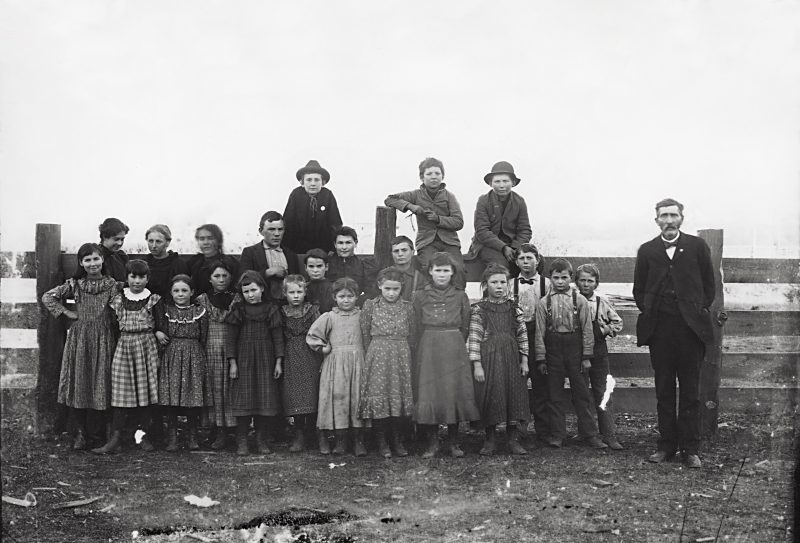What Is Multigenerational Housing?
The U.S Census Bureau defines a multigenerational home as a household that consists of more than two adult generations living under the same roof or grandparents living with grandchildren under the age of 25.
Adult children living with parents, elderly parents moving back in with adult children, and adult children living with their grandparents are all common forms of multigenerational living that are on the rise today.
A Brief History of Multigenerational Housing
Throughout the 19th century, most Americans lived in a multigenerational household. Before nursing homes and long-term care facilities, it was commonplace for parents to live with their adult children, and family farms/businesses were worked into adulthood with the promise of inheritance keeping children close to home, often in the same family dwelling. This pre-industrial family life cycle was borne of culture and necessity and it persisted into the early 20th century.
As the industrial revolution began to take hold in America, immigration increased and the eastern United States became more population-dense. Families began to break apart little by little in search of economic opportunity. Young adults moved west with the promise of land and prosperity, while others moved off of family farms and into cities looking for work. Since then, multigenerational housing has steadily decreased, reaching its lowest point in 1980 with just 12% of the U.S. population living in a multigenerational housing situation.
While we could write a book about the history of multigenerational housing, a quick google search will show you that this has already been done (more than a few times)!
What we find most interesting to our profession is that multigenerational housing is once again on the rise in the U.S.! As realtors, we see an increasing number of clients seeking to buy homes that work for multigenerational living.
The most recent census statistics say that 1 in 5 Americans currently live in a multigenerational household, and a 2016 study conducted by the Pew Research Center concurred that 20% or some 60 million Americans are living with more than one adult generation under one roof
Why The Sudden Shift Back To Multigenerational Living?
There are a number of different factors contributing to the increase in multigenerational housing that we are seeing today. The soaring cost of college tuition coupled with an oversaturated supply of college graduates seeking “bachelor degree” level work has lead to the highest number of young adults living at home with their parents since the Great Depression.
Additionally, rising home prices, an increase in immigration from parts of the world that have a strong culture of multigenerational living, and effects of the coronavirus pandemic, are all factors driving the push for multigenerational homes.
While some claim that multigenerational housing is merely a negative side effect of our sky-high housing market and covid-19, (where families have moved their loved one’s home in order to minimize exposure) it appears that it is also becoming a desirable choice for many Americans.
Whether the realities of a pandemic world or a shift in our collective culture has played the biggest role is something that future research will undoubtedly address, but, regardless, multigenerational housing is becoming, at times, even a luxury-living choice.
The Benefits of Multigenerational Housing
So what are the potential benefits of multigenerational housing? Overall, there are many. Sharing intergenerational wealth is a powerful tool in a society with an ever-increasing cost of living. While the pros and cons vary for different family situations, here is our list of some of the biggest pros to multigenerational housing situations.
1. Shared Expenses
In many parts of the country, it isn’t just housing that is expensive. Property taxes, sales tax, childcare, gas prices, and the cost of everyday goods are also on the rise.
By pooling family resources, expenses can be shared. If you are considering moving an adult child home, you can charge them a portion of groceries and utilities or “rent”. This will bring in some money to pay bills but won’t cost them a mortgage payment and a half (like paying actual rent for an apartment in major metropolitan areas today.)
Conversely, moving adult parents back home can relieve financial burdens and reap benefits for both parties. By pooling savings, families can afford a more spacious home, and the mortgage payment/utilities can be split between both parties. In the end, everyone is able to save more of their monthly income, which builds family wealth, while still living comfortably in a shared-living situation.
2. Shared Responsibilities
Today, 49% of married families feature two working adults, and it is no secret that one tenet of Americanism is a tendency to place one’s career in very high esteem. This means yard work, child care, pet care, and everyday chores have to be split between two people who spend most of their time each week outside of the home.
Transitioning into a multigenerational living situation eases these burdens. For many, moving another generation into the home means help with childcare, pet sitting, and day-to-day chores like cooking and cleaning. Sharing these responsibilities also goes toward reducing expenses, which as stated above, is a big deal for most Americans today!
3. Closer Family Bonds
While the old tv trope is to cringe at the thought of your mother-in-law moving in with you, early research indicates that the pandemic has put some things in perspective in terms of the importance Americans place on being close to family.
Many of us went 9-months to a year without seeing elderly or high-risk family members in person. Some, whose family members are under a strict lockdown in nursing facilities, still have not seen their loved ones face to face since the onset of the pandemic.
The reality that a year or more of an elderly family member or young child’s life is a really big deal is hitting home for us all and fear over what happens should a loved one fall ill has kept many awake at night over the course of this past year.
As we see more and more families choosing to move parents and adult children closer to home, it is possible that this trend is growing due to the mental and psychological effects we are facing in the wake of this pandemic. While some dismiss it as a passing trend or a negative consequence, it should go without saying that putting one’s life in perspective and refocusing on the importance of family is not necessarily a negative.
Weighing The Pros And Cons
Blending multiple generations is not as easy as packing a few boxes and saying “come on in”. Complicated family relationships, shared living spaces, and decreased alone time/one on one time with spouses and kids are all considerations that complicate multi-gen living situations.
Luckily, there are plenty of resources available today to help make the transition into a multi-generational living situation. Experts sight creating space for open and honest communication, setting and respecting healthy boundaries, and carving out space for alone time/one-on-one time between family members as ways to ease the emotional and mental stresses of having multiple family groups living under one roof.
This is where the architects and homebuilders of today have a big role to play. By creating floor plans that work for multigenerational living situations, they create ways to ease the burdens associated with having multiple adults in one home.
Multi-gen New Construction Is On The Rise!
Homebuilders with large research and development budgets such as Pulte Homes and Toll Brothers are increasingly creating floor plans that accommodate multigenerational housing intricacies. Basements with eat-in kitchens and bedroom suites, main floor in-law suites with private bathrooms, and even apartment-style additions with private entrances are becoming more and more popular. If you are considering selling your current home and blending families in a new house, new construction may be the answer to find an ideal multigenerational floor plan.
While weighing the pros and cons is a process that looks different for everyone, it is good to keep in mind that there are two sides to the home buying/selling decision. The financial side and the emotional side. In different situations, one takes precedent over the other, but if you find yourself grappling with the financial benefits versus the emotional costs or vice versa, it is important to take time and weigh both sides of the equation! This is where financial advisors, friends, and your real estate agent become truly invaluable tools in helping advise you on making such an important life decision.
If you are considering a move into a multigenerational living arrangement and would like to discuss the pros and cons more, contact us! We are available to answer any housing-related questions and give you our advice based on our years of experience serving clients in similar situations!
Contact Us













